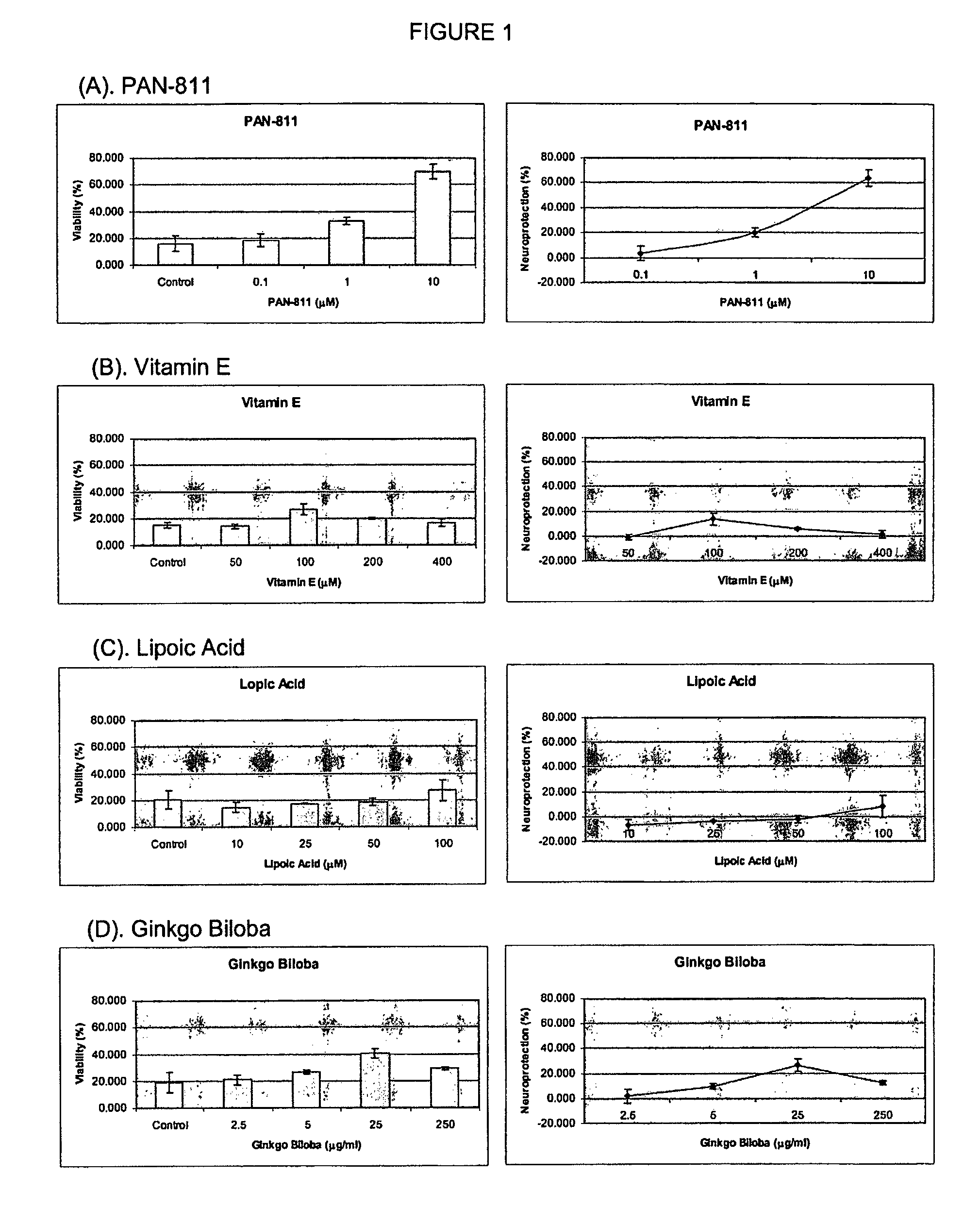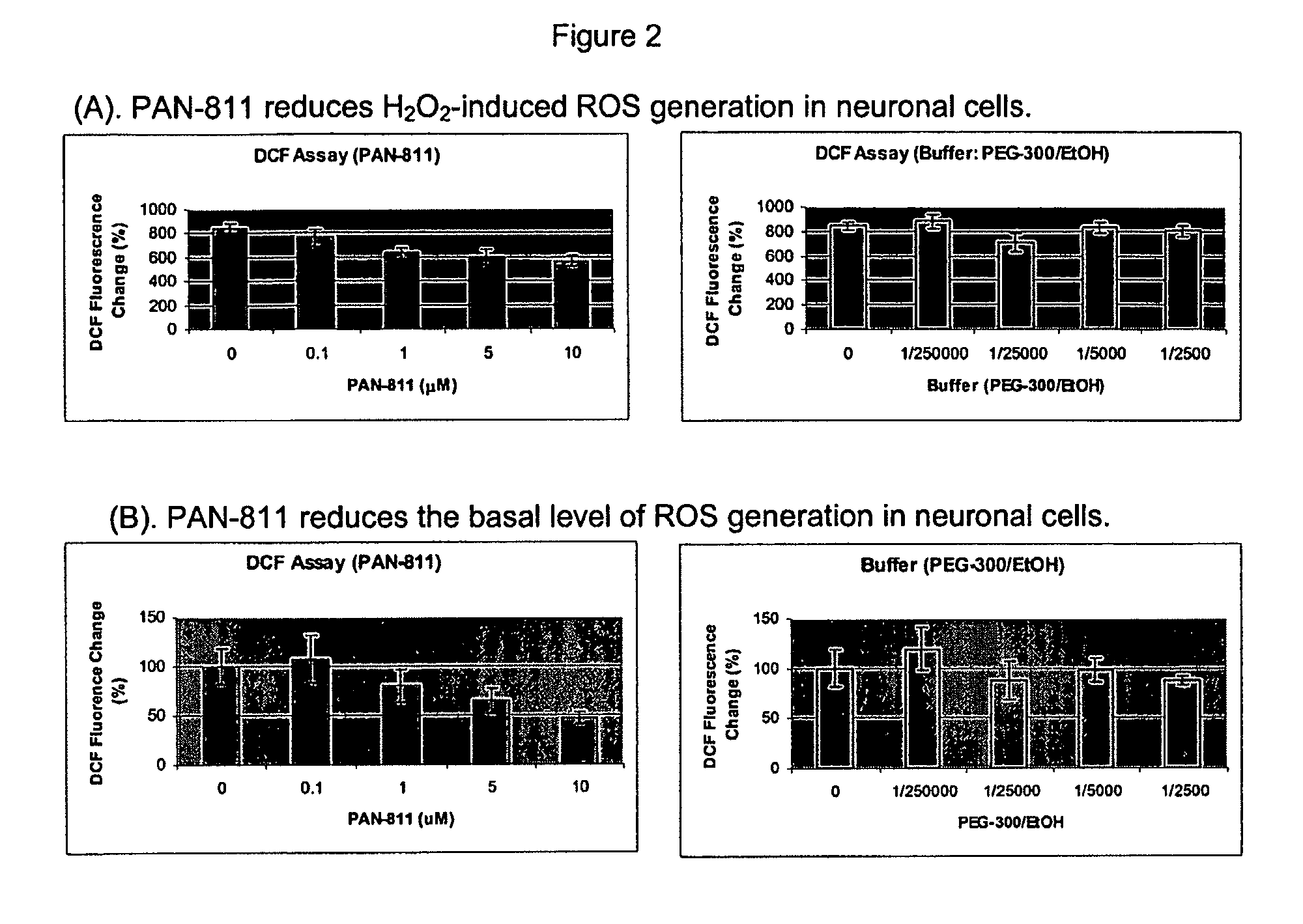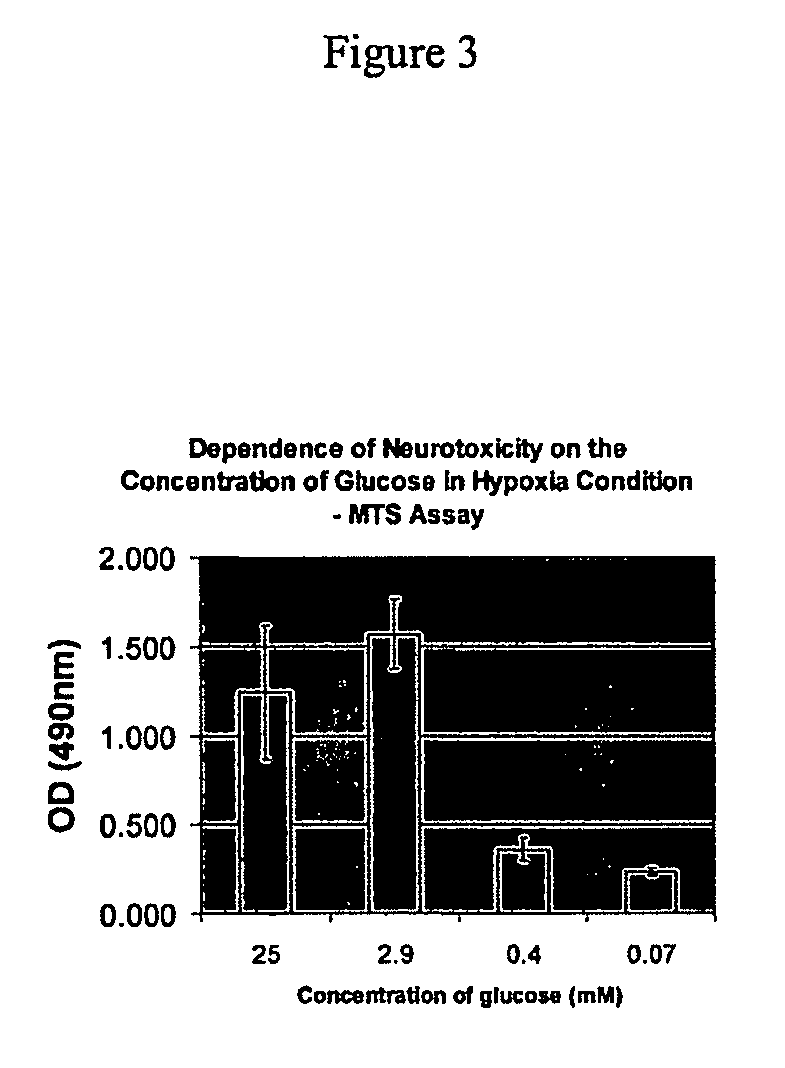Methods of treating ischemic related conditions
a technology of ischemia and related conditions, applied in the direction of biocide, cardiovascular disorders, drug compositions, etc., can solve the problems of excessive stimulation, accelerated depletion of these limited energy resources, and neuronal excitation to death
- Summary
- Abstract
- Description
- Claims
- Application Information
AI Technical Summary
Benefits of technology
Problems solved by technology
Method used
Image
Examples
example 1
Comparison of the Neuroprotective Potency of PAN-811 with Other Known Neuroprotectants
1. Objective
[0114]The purpose of this study was to compare the neuroprotective capacity of PAN-811 (3-aminopyridine-2-carboxaldehyde thiosemicarbazone; C7H9N5S; MW=195) with known neuroprotectants, such as vitamin E, lipoic acid and ginko biloba in a cell-based model of Alzheimer's disease-associated oxidative stress.
2. Materials and Methods
2.1. Study Design
[0115]2.1.1. Isolation and Acculturation of Cells.
[0116]Primary cortical neurons were isolated from a 17 day old rat embryonic brain and seeded on 96-well plate at 50,000 cells / well in regular neurobasal medium for 2-3 week. Twice, half the amount of medium was replaced with fresh neurobasal medium containing no antioxidants.
[0117]2.1.2. Treatment with PAN-811 Other Known Neuroprotectants and H2O2
[0118]PAN-811 was dissolved in EtOH at 1 mg / ml (˜5 mM), and further diluted in medium to final concentration at 0.1 μM, 1 μM, and 10 μM. Other known n...
example 2
The Effect of PAN-811 on Reactive Oxygen Species (ROS) Generation in Neuronal Cells
Objective
[0138]The purpose of this study was to assess the capability of PAN-811 to reduce ROS generation in a cell-based model of Alzheimer's disease-associated oxidative stress.
1. Materials and Methods
1.1 Study Design
[0139]1.1.1 Isolation and Acculturation of Cells.
[0140]Primary cortical neurons were isolated from a 17 day old rat embryonic brain and seeded in 96-well plates at 50,000 cells / well in regular neurobasal medium for 2-3 weeks. Twice, half the amount of medium was replaced with fresh neurobasal medium without antioxidants.
[0141]1.1.2 Pre-loading of Cells with CM-H2DCFDA Dye and Treatment with PAN-811 and H2O2
[0142]Primary cortical neurons were rinsed once with HBSS buffer and incubated with 10 μM 5-(and-6)-chloromethyl-2′,7′-dichlorodihydrofluorescein diacetate, acetyl ester (CM-H2DCFDA) to pre-load the dye. The cells were then rinsed with HBSS buffer once and treated with PAN-811 at fin...
example 3
PAN-811, a Potential Neuroprotectant for Hypoxia- or Hypoxia / Hypoglycemia-Induced Neurotoxicity
1.0 Introduction
[0163]Reducing neuronal damage in the first minutes after a stroke is an important strategy to gain effective therapy. During stroke, the transport of oxygen and glucose to localized regions of the brain is halted by thrombo-embolic blockage of an artery, which causes neuronal loss in the central core of an infarction. The cells in the central core die very quickly via a necrotic mechanism. The area of the brain surrounding an ischemic infarct that retains its structure but is functionally (electrically) silent is termed the penumbra. The penumbra is a temporal zone, in that its evolution toward infarction is a relatively progressive phenomenon (Touzani et al., 2001). This zone provides the possibility of salvaging some of the brain function and the therapeutic window for treatment of the penumbra is much longer than that for the infarcted area. The penumbra can also be des...
PUM
| Property | Measurement | Unit |
|---|---|---|
| concentration | aaaaa | aaaaa |
| concentration | aaaaa | aaaaa |
| concentration | aaaaa | aaaaa |
Abstract
Description
Claims
Application Information
 Login to View More
Login to View More - R&D
- Intellectual Property
- Life Sciences
- Materials
- Tech Scout
- Unparalleled Data Quality
- Higher Quality Content
- 60% Fewer Hallucinations
Browse by: Latest US Patents, China's latest patents, Technical Efficacy Thesaurus, Application Domain, Technology Topic, Popular Technical Reports.
© 2025 PatSnap. All rights reserved.Legal|Privacy policy|Modern Slavery Act Transparency Statement|Sitemap|About US| Contact US: help@patsnap.com



